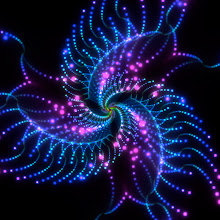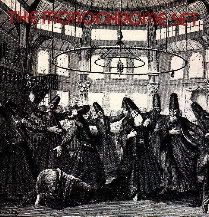
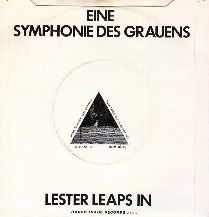
The Monochrome Set did lose out on a piece of the pop prize. They could have been big, but they weren't, which sucks for them but makes writing about them now that much more gratifying. Actually I'm too lazy to write about them, so here's what Aidan Meritt had to say about them in Positive Vibrations, his now-defunct Robyn-Hitchcock-obsessed zine from the early nineties:
I spoke to Robyn Hitchcock in Leeds one cold October night and asked him why the Soft Boys never became pop stars; he replied that like the dBs, the Soft Boys were one of the great "loser bands". Regrettably, the Monochrome Set fall into the same category. So how do we define a "loser band"? The simplest definition is a band that did everything right musically, had the charisma to carry it all off, won critical acclaim but never made it pay. A band that, had they sold one more single, had one more song on the radio, bought one more round at some muso executive's local hostelry, would have hit the big time with the force of a skinhead's boot. The fate of the "loser band" is to see copyists laughing all the way to the bank whilst they take their instruments down to the pawn shop. The Monochrome Set got closer than most to stardom, but were doomed by being just that little bit too good to be snorting cocaine off a naked model's breasts. Their glamour and mystique were just that little bit too subtle to allow them entrance to Stringfellow's; instead they were stuck with the college circuit and the occasional heading of the bill at the Rock Garden. The occasional tearful eulogy in the music press is their only reward.
The Monochrome Set were the archetypal post-punk art-school band. Formed from the ashes of Adam and the Antz (note the spelling), they began with a brace of wiry, angular singles on Rough Trade between 1978 and 79 with the core of their line up being Andy Warren (bass), Lester Square (guitar) and the enigmatic Bid on lead vocals; his most memorable claim was that he was descended from Indian princes. He was handsome and stylish enough to carry it off. Virgin Records' Din-Disc subsidiary clearly saw their potential and by 1980 they were in the studio recording their debut album The Strange Boutique. What can I say in a few sentences to do justice to this record? How can I explain to the uninitiated the class that oozes from its every pore? If one can imagine a classy swinging London party, probably circa 1966, with Andy Warhol, Jane Fonda, the Aga Khan and Mary Quant in attendance. Visualise the luxuriant seating, the fancy cocktails, imagine how exclusive the entrance to that party is. That's what The Strange Boutique sounds like. The album grazed the lower reaches of the national chart and there must have been a feeling that one more album of a similar standard could have shot the Monochrome Set to stardom.
"Eine Symphonie" is a single they released before recording The Strange Boutique, followed by a live version of the title track from the debut that appeared on live album "Fin" in 1985 and again on its renamed incarnation "The Good Life" in 1992.
The Monochrome Set - Eine Symphonie des Grauens
The Monochrome Set - Strange Boutique (live)
Friday, July 28, 2006
I love losers
Wednesday, July 19, 2006

In the late 70's and early 80's, The Homosexuals took the DIY-I-don't-give-a-fuck attitude of punk and carried it a step further by actually not giving a fuck. They totally isolated themselves from any sort of scene, purposely alienated themselves from less open-minded fans with their awesome choice of name, and winkingly deconstructed any bits of their music that bordered on pop or beauty or accessibility.
Core members Bruno, Anton, and Jim were amazingly prolific during the band's short existence (not surprising for chaps of the post-punk era), and almost everything they ever recorded as a band is included on the 3xCD Astral Glamour, released on Messthetics in 2004. Deciding which songs to post was difficult, as there is a huge range of styles encompassed here, but I'd say these tracks are among the more accessible for any new listeners. There are some beautiful moments in many of the songs, but they rarely fully indulge the listener by repeating the hooks and sweet riffs -- almost as if they think giving us what we want is some sort of creative compromise.
The Homosexuals - Hearts in Exile
The Homosexuals - You're Not Moving the Way That You're Supposed to
The Homosexuals - Collapsible You
The Homosexuals - Pamela
Buy it from Messthetics here
Bonus:
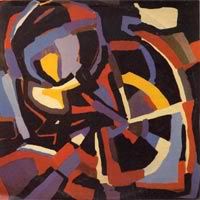
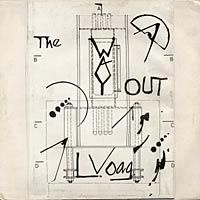
Jim was involved in several other experimental and sonically-haphazard projects during and after The Homosexuals. His band L Voag released an album The Way Out that contains the original version of "Kitchen" that Drew Daniels covered on the most recent Soft Pink Truth album.
L Voag - Kitchen
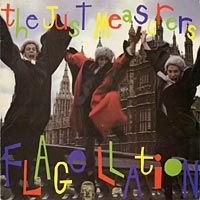
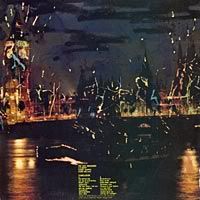
Another project of his was the Just Measurers, who recorded an album Flagellations
Just Measurers - Calling All Teenagers
Again, both of these tracks are among the most accessible found on either of these records. Both records can be donwloaded in their entirety (!) for free from Insect and Individual.
Wednesday, July 12, 2006
What's Cooler Than Being Cool

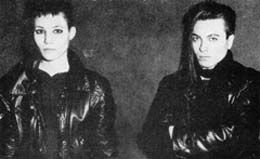
Consummate French coldwavers KaS Product are, well, ice cold. They sing songs about cold people who are dead on the inside, they have frosty dentine ice breath, they dance in abandoned industrial factories, and they have the coolest hair all the damn time.
At their best, KaS Product sound like what Siouxsie and the Banshees might have if they had been produced by DAF. "So Young But So Cold," from their 1982 debut LP Try Out, has become something of a poster track for coldwave, and was the namesake of Tigersushi's 2004 coldwave compendium So Young But So Cold: Underground French Music 1977-1983.
Kas Product - So Young But So Cold
At their worst (which is kind of the best), singer Mona Soyoc's jazz-background-influenced histrionics overpower everything and land them in the realm of schmaltzy cabaret schtick. The raunchy little role playing bit she has with her, erm, pussy cat in "Pussy X" is exactly what I'm talking about. If you can stand this sort of thing, it's actually really amazing and hilarious.
Kas Product - Pussy X
See the hair in action below in the 1982 video for "Never Come Back." Electroclash kids eat your asymmetrical hearts out.
Tuesday, July 04, 2006
The Tomitas
It's 4th of July, America's birthday, day of beer and fire and meat and sweaty pride and, generally, bad music. Even if I did have any interesting songs about America or renditions of the spangly banner I wouldn't post them because that would be boring. Instead I'll play contrarian and take this day to celebrate two Japanese geniuses by the name of Tomita.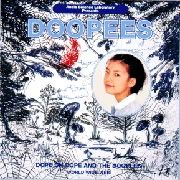
In 1996 Japanese super-producer Yann Tomita teamed up with squeaky j-pop fruits the Doopees. The result is 1996's insane "Doopee Time," which you can download in its entirety from WMFU's Beware of the Blog or buy from Amazon
Yann Tomita - How does it Feel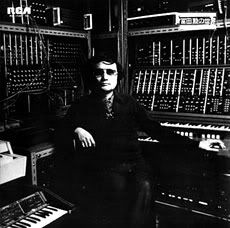
Isao Tomita, no relation to Yann Tomita, is a synth-buff and composer who pioneered the bridge between classical and electronic music along with other synth-heads like Ruth White and Wendy Carlos. But whereas White and Carlos took a color-by-number approach to translating classical pieces into electronic ones, Tomita amassed an aresnal of analog synths and twiddled knobs to create space-age interpretations of modern classics. No real instruments on earth even come close to Tomita's beauteous synthesizers. In 1974, this totally amazing version of Debussy's "Claire de Lune" made him famous in Japan and garnered him crossover success in the US. It's a masterpiece in its own right, I bet Debussy would have agreed.
Isao Tomita - Claire de Lune (Debussy)

